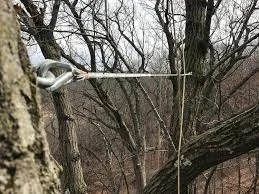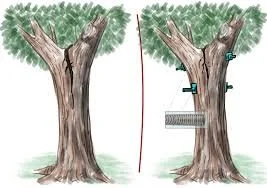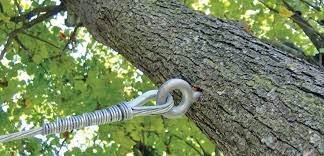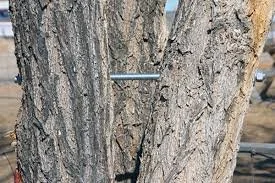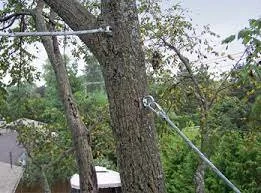Tree Cabling and Bracing
Understanding Tree Cabling and Bracing
Tree cabling and bracing are proactive solutions employed when a tree’s structural integrity is compromised. Here’s what you need to know:
Cabling:
Purpose: Cabling involves installing flexible cables between branches to redistribute weight and stress. It reduces the risk of branch breakage.
When to Use: Cabling is typically applied when a tree displays signs of structural weakness, such as included bark, codominant stems, or large, overextended branches.
Best Practice: Combine cabling with weight reduction or canopy pruning for optimal results.
Bracing:
Purpose: Bracing employs rigid rods to strengthen weak spots in the tree, providing mechanical support to the structure.
Application: Bracing prevents splitting of weak branches and trunks.
Placement: Bracing rods are usually installed below the cabling system.
Regular Inspections Matter
Regular inspections are crucial:
Assess the condition of cables and braces.
Evaluate the tree’s overall health.
Conduct inspections at least annually or after severe weather conditions.
Remember, while tree cabling and bracing are vital tools, they aren’t substitutes for good tree care. Regular pruning, proper fertilization, and pest management are equally important for maintaining a tree’s health and structural integrity.
As professional arborists, mastering tree cabling and bracing techniques enhances your service offerings and sets you apart. Preserve and protect the environment—one tree at a time! 🌳🌿
Feel free to customize this section further or add any specific details relevant to your services. If you have preferences or need additional information, let me know! 😊


